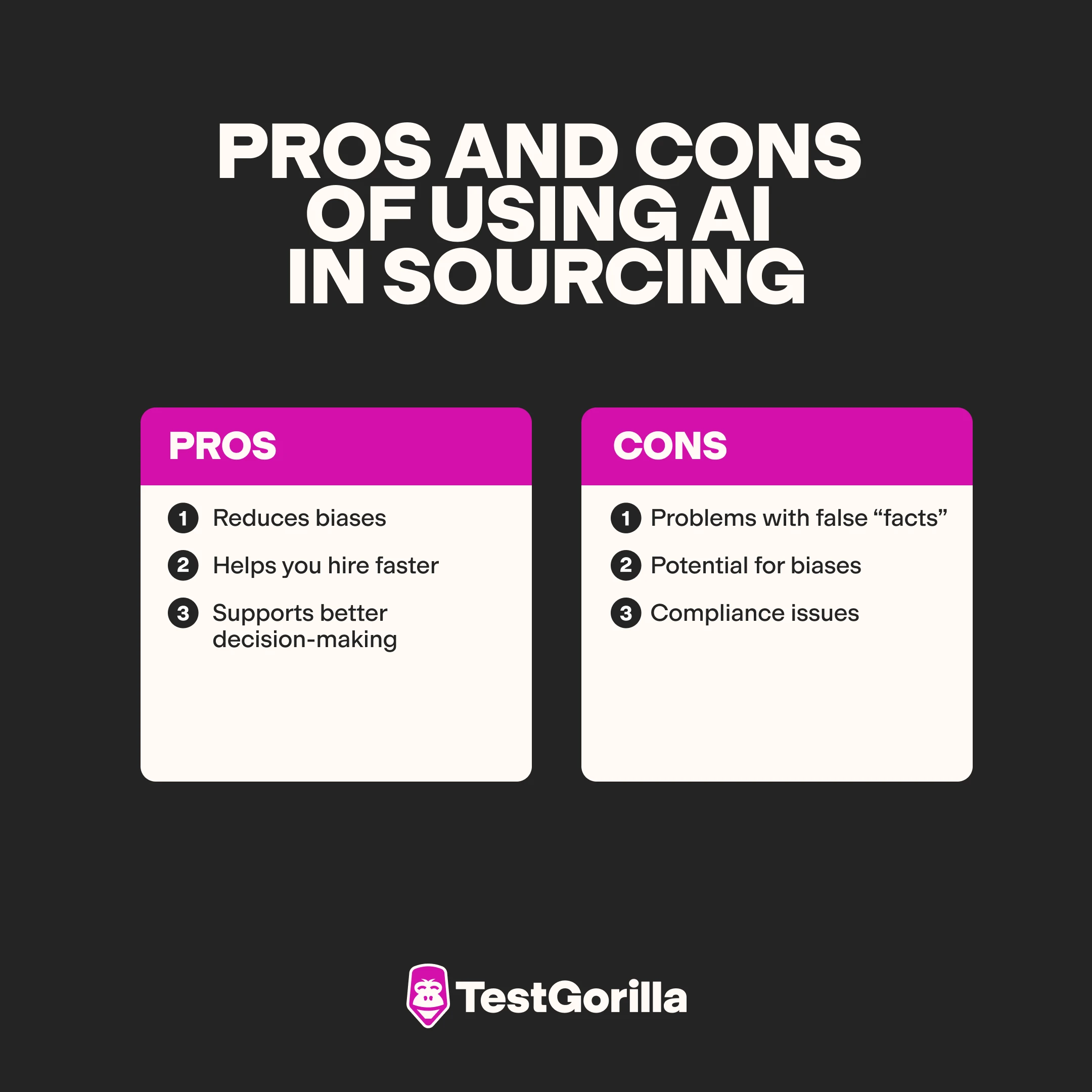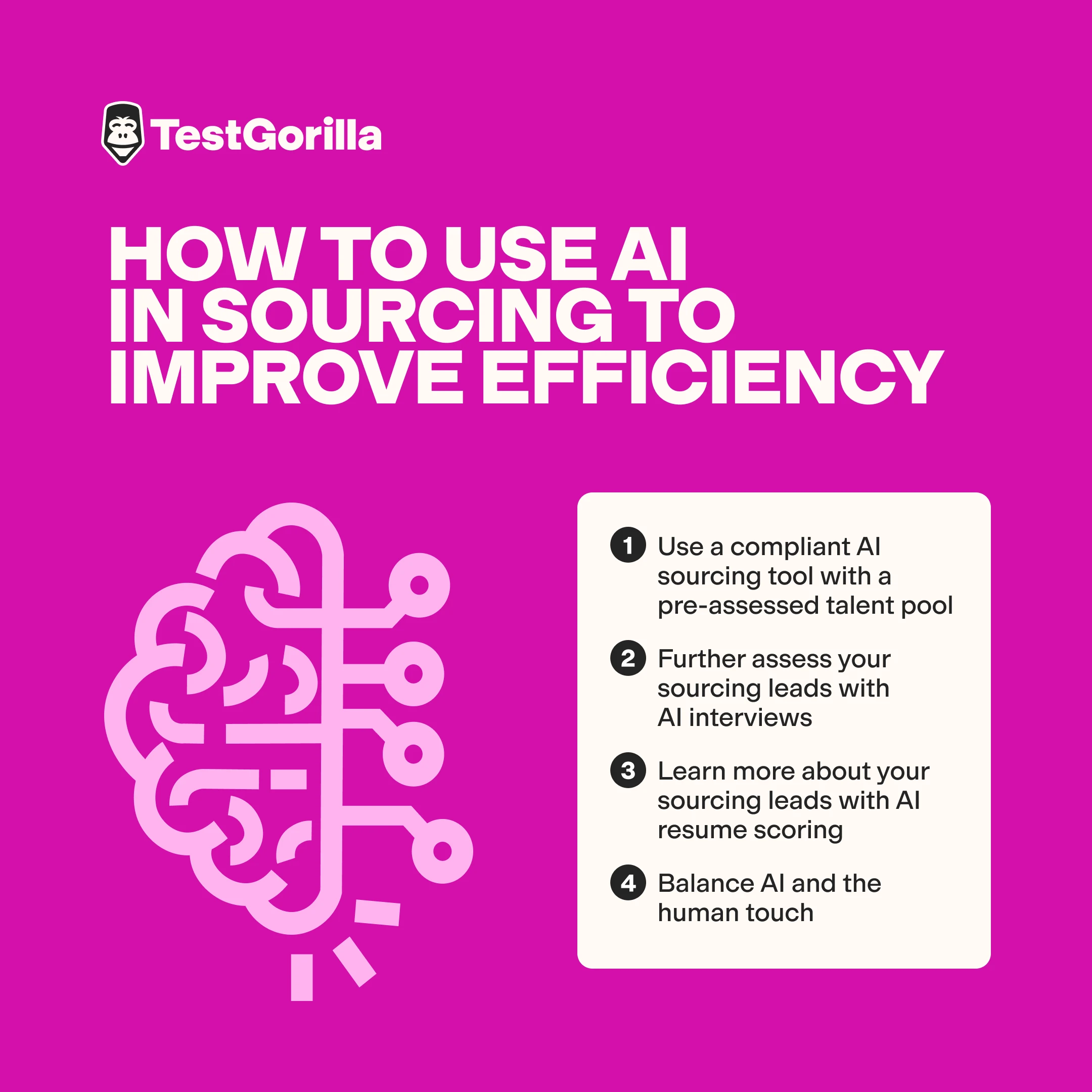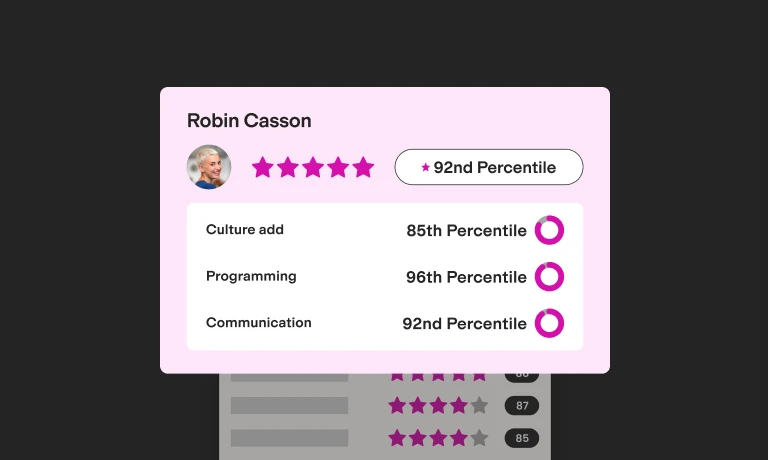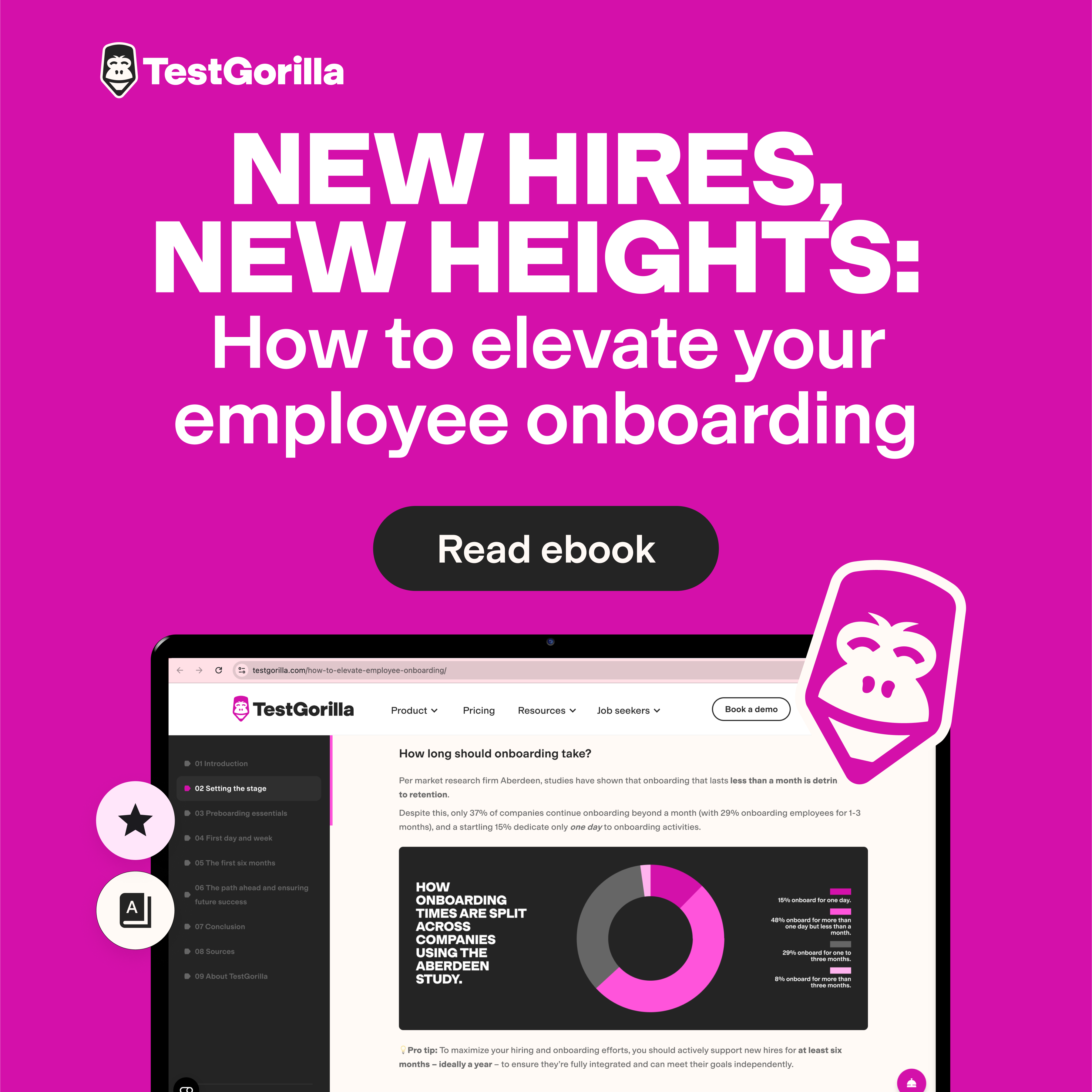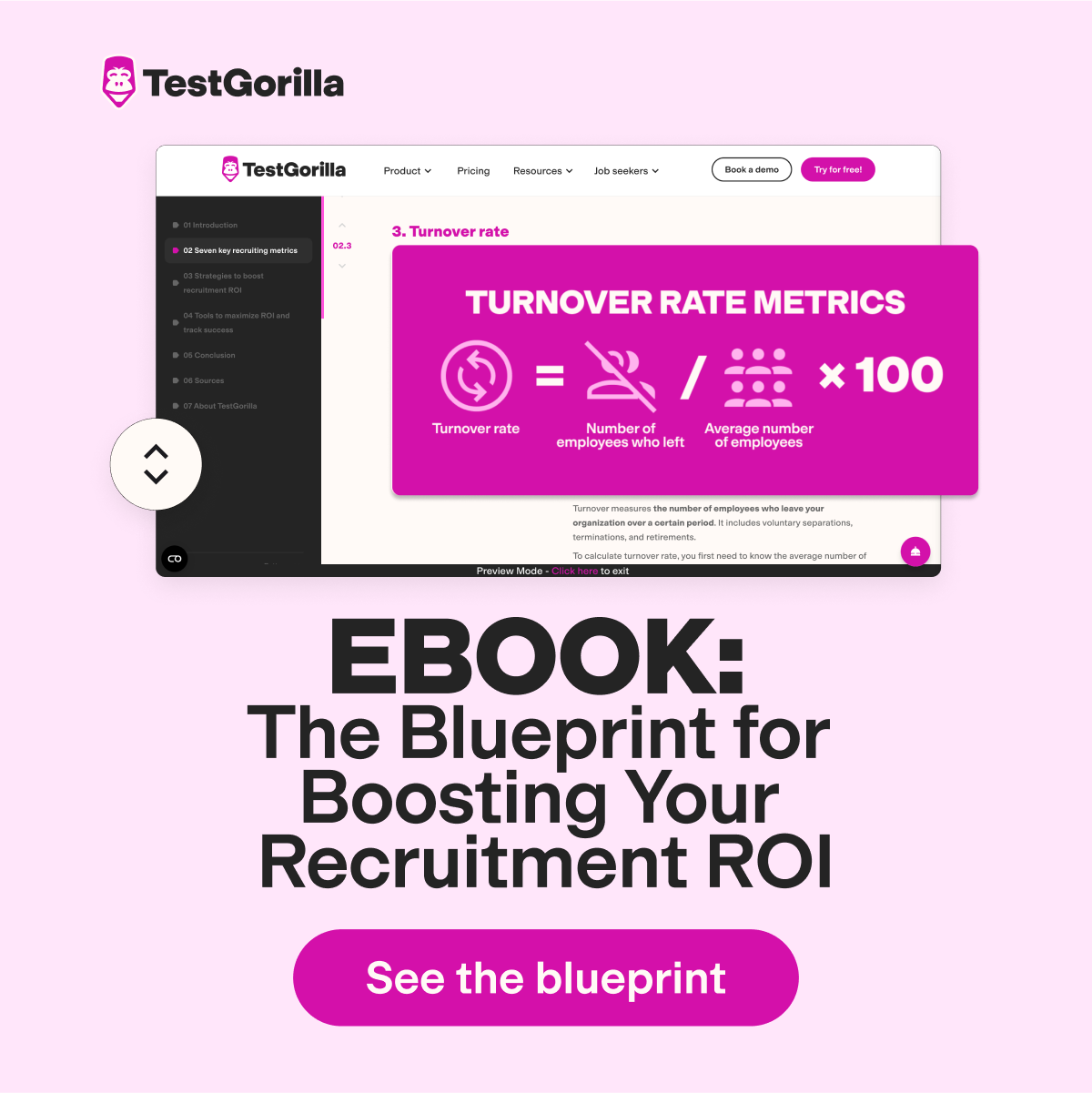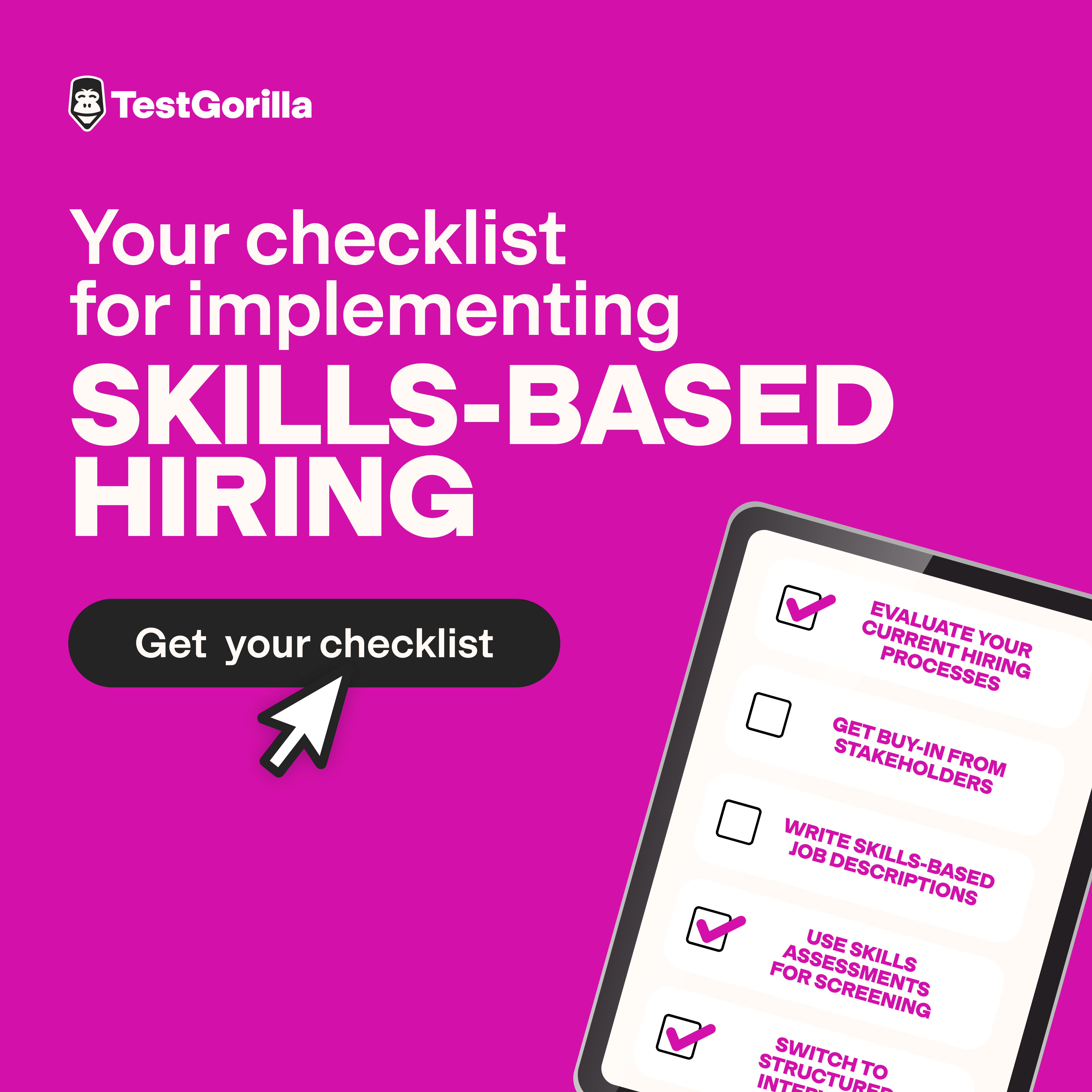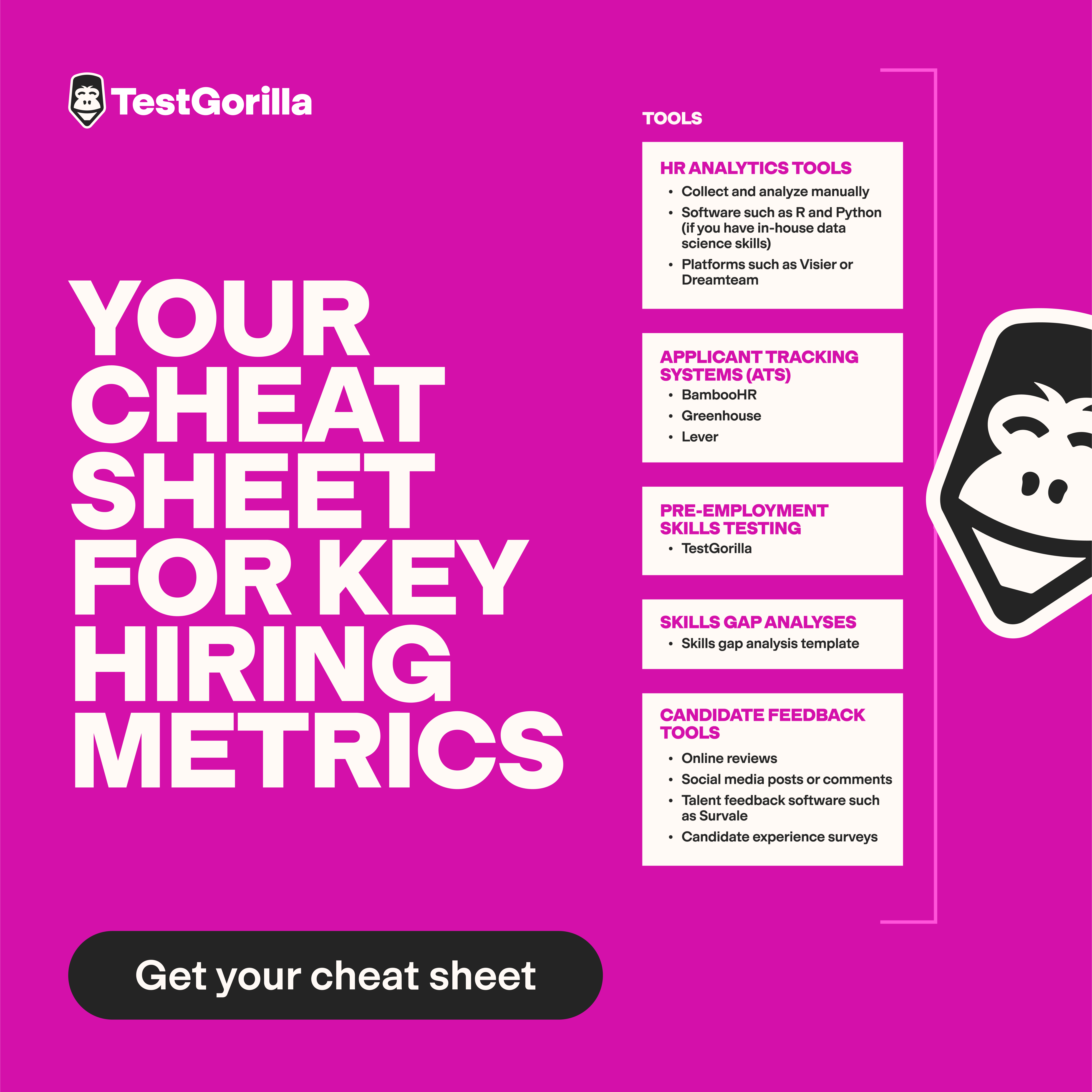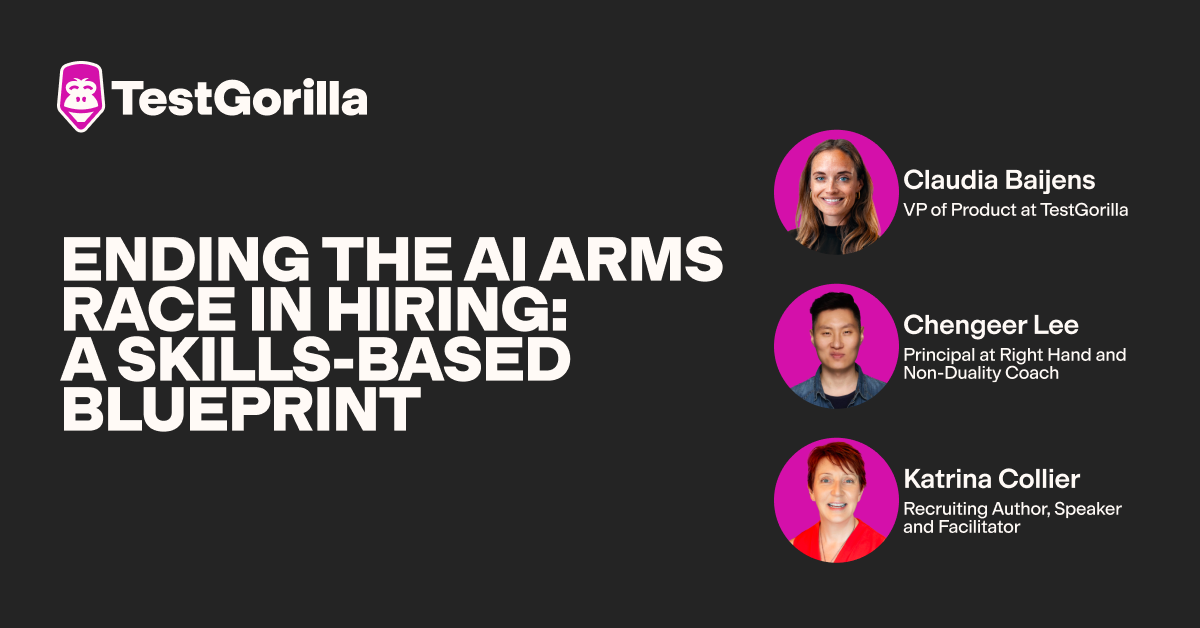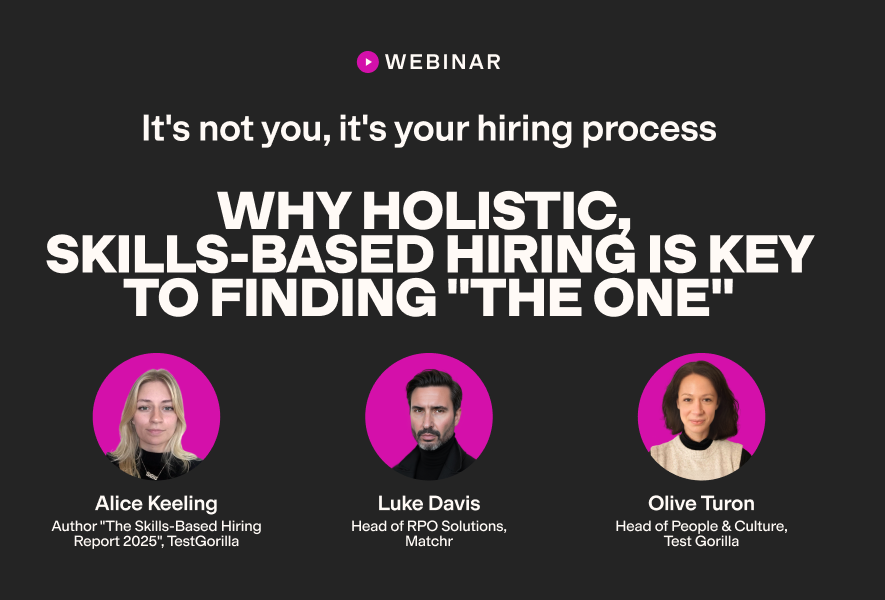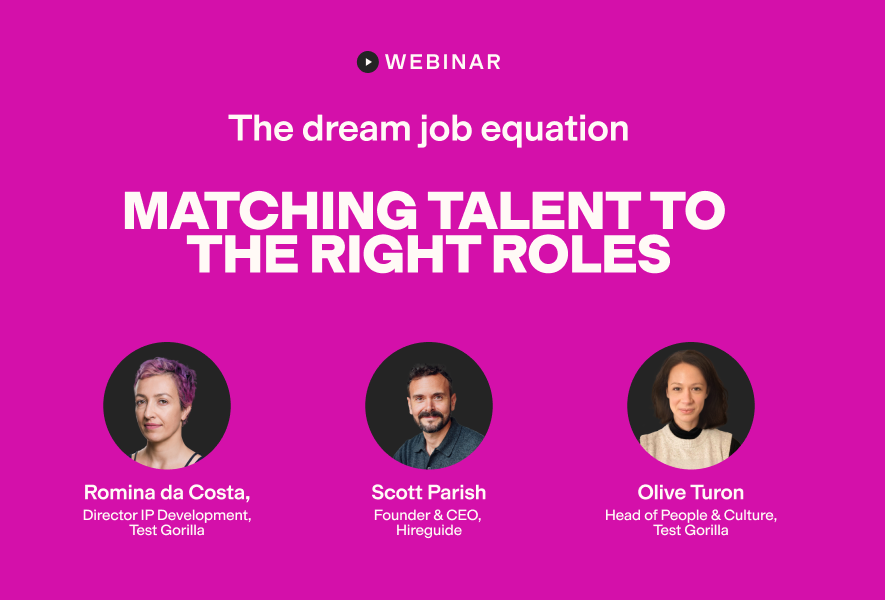Sourcing passive talent is like looking for a perfect grain of sand on a beach. With countless potential candidates scattered across social platforms, databases, and your professional networks – most boasting similar skills and qualifications – how can you tell which ones are worth pursuing? The process is time-consuming and prone to bias.
Time savings and bias reduction are among the reasons AI in recruiting has gotten so popular. AI can find that grain of sand much faster than any human because it can analyze loads of candidate data simultaneously. Despite this, according to our research, only 37% of sourcing teams say they feel well-prepared for future sourcing trends, including AI.
Our take? Start taking advantage of this trend now – because AI has the power to transform your sourcing strategy in many positive ways.
Below, we’ll explore what AI in recruiting means for talent sourcing today.
What is AI in recruiting?
Our 2025 State of Skills-Based Hiring study found that 70% of companies now use AI in their workforce or processes.
When it comes to recruiting and sourcing, AI can support everything from job postings to job offers. It can generate job descriptions and candidate communications, for instance. AI chatbots can even communicate with candidates throughout the hiring process to schedule interviews and answer questions. Humanlike AI interviewers can ask screening questions and evaluate candidate responses using structured criteria. And AI can scan resumes, profiles, or other sources of candidate information to infer candidates’ skills.
And what is AI talent sourcing, specifically?
Previously, talent sourcing required recruiters to manually scour social media, industry forums, professional organizations, and other sources to find passive candidates.
Now, AI can find and match candidates to jobs faster than humans or older tools, taking just seconds to examine hundreds, even thousands, of candidate profiles.
It doesn’t just check for keywords or job titles. Instead, it infers their skills and fit based on their work history, career progression, responsibilities, and more. So if their previous roles aren’t an exact job title match for your current role but it thinks they have the right skills, it’ll put them forward.
For example, Yad Senapathy, Founder & CEO at Project Management Training Institute (PMTI), uses AI tools to scan professional networks and certification databases to locate candidates with the right credentials and experiences in project management. He says:
“AI eliminates the practice of pushing through hundreds of resumes, aiming instead for credible data, like credentials and completion rates, and student reviews. This makes the first match faster and more the same, freeing human recruiters to spend more time on final evaluations, and interviews.”
Some AI tools even have access to assessment data, allowing them to match candidates based on verified skills. More on this later!
The pros of using AI in sourcing
So why should you use AI in your talent sourcing?
Reduces biases
Unlike humans, AI is impartial: It can look beyond what’s on someone’s candidate profile to identify capabilities and other qualities while disregarding things often prone to bias, such as their gender or the educational institution they attended.
Helps you hire faster
According to Bullhorn, recruiters waste an average of 14.6 hours a week sourcing candidates. But autonomous search and match could save recruiters 4.5 hours a week on candidate searches and a further 3.6 hours per week for screening and admin tasks.
Michael Pedrotti, Co-founder at GhostCap, says the AI he uses in sourcing efforts “searches in LinkedIn, GitHub, and gaming forums and filters those having SEO, WordPress, or server management experience….What would require a week previously could be completed in a few days.”
Supports better decision-making
Because AI can analyze large volumes of candidate data, from work histories and self-reported skills and responsibilities to online activity and beyond, it helps you get a bigger picture of their skill sets. Its data-driven insights can make your hiring decisions more objective and not based on things like gut feeling.
The best insights on HR and recruitment, delivered to your inbox.
Biweekly updates. No spam. Unsubscribe any time.
What are the cons of relying too much on AI in recruiting (including sourcing)?
While AI has many benefits, it’s not without issues.
Problems with “facts”
Emily Mintun, VP of Chesterfield Hospitality Elite Executive Recruiters, explains:
“I had a recruiter on my team use AI to edit a candidate’s resume to help her update it and didn’t double check the information. It was submitted to the client and all the way to an offer. However, in the education verification process it was revealed that she did not finish her bachelor's degree when her resume said she did (a degree was a prerequisite for the role.)
“We had to rescind her offer after she had already given notice to her previous employer. It was a mess! Both the recruiter and candidate had the best intentions and had no desire to falsify information; they just didn't catch how AI had edited her resume. They unfortunately lost their credibility with this client, and the candidate was left without a job.”
Emily’s experience demonstrates how AI is prone to hallucinations – making up facts and stating them as truth. This can create major problems for sourcers, who might use AI to, for instance, generate summaries of candidates based on their online profiles and use those summaries to make hiring decisions.
The solution is to always double check anything it writes for you.
Potential for biases
While AI can be great for mitigating biases, it can also introduce or replicate them if it’s been trained with biased source material. (For instance, it might show a preference for white-sounding names when sorting through resumes.)
Any AI tool should start with unbiased source material and be fact checked regularly to ensure it remains unbiased. Otherwise, it could lead to our next issue…
Compliance issues
Ryan L. Eddings, Partner at Hanson Bridgett LLP, Labor & Employment Counsel to California Employers explains:
“California’s recently finalized Automated Decision Systems (ADS) regulations treat AI-assisted screening and assessment tools as employment ‘selection procedures’ subject to the state’s civil rights and fair-employment laws…
“In practical terms, any tool that “scores, ranks, or recommends” candidates (e.g., résumé screeners, chatbots, even interview scheduling algorithms) now falls within the state’s anti-discrimination and recordkeeping framework. Recruiters need to vet vendors for compliance, understand data-training sources, and keep clear documentation showing the AI supports, rather than replaces, human decision-making.”
While California is ahead of everywhere else on these regulations, other places such as New York, Illinois, and Colorado are drafting similar bills. These laws are good – they’re meant to protect candidates from AI bias – but they mean that companies not using AI carefully are at risk of discrimination or privacy claims.
Becoming compliant now will save sourcers future headaches.
4 ways to use AI in sourcing to improve sourcing efficiency – and avoid the cons above
Here are four ways to use AI in your sourcing efforts:
1. Use a compliant AI sourcing tool with a pre-assessed talent pool
Picking an AI sourcing tool with a pre-assessed database of candidates means cutting your time-to-hire because you’ll already know what those candidates can do.
TestGorilla’s Talent Sourcing is one option. It gives you access to candidates who’ve undergone skill assessments. Many of these candidates haven’t just been tested on hard skills – they might’ve also taken soft skills or personality tests. This means you can see not just what someone knows but also what they could add to your organization (like strong communication).
If you want to learn more about a candidate’s skills, you can invite them to take additional assessments – right through the platform.
→ Did you know that TestGorilla AI follows strict data privacy and ethical design standards and is preparing for future and evolving AI regulations?
2. Further assess your sourcing leads with AI interviews
If you’re hiring at scale, AI interviews help you screen more candidates in less time – so you can fill vacancies sooner. It can even qualify candidates before you speak to them, giving you access to a pre-assessed candidate pool and further speeding up your hiring efforts.
Some AI interviews work like this: Candidates respond to structured questions on video. The AI then scores their video responses using clear rubrics. These interviews work as a replacement for manual phone interviews and use fair, explainable scoring.
Other AI interviews – called “conversational AI interviews” – are designed to feel like live face-to-face video calls. The AI has a human face and voice and can ask dynamic follow-up questions, making these interviews more engaging for candidates and giving you even more data to work with.
TestGorilla offers both kinds of AI interviews and enables you to customize the questions to suit your business needs.
→ Discover how conversational AI interviews are transforming high-stakes job interviews.
3. Learn more about your sourcing leads with AI resume scoring
Traditional resume scoring (commonly done by applicant tracking systems) often uses a keyword-based system that can accidentally leave out great candidates just because they didn’t use the right language in their resumes.
But AI resume scoring can consider a resume more holistically and even explain why it gave candidates certain scores.
TestGorilla’s AI goes further – its AI resume scoring works by creating criteria based on your job description and scoring resumes on the skills and experience your role needs.
We recommend using this method after screening candidates, as the resume is a flawed hiring tool: candidates can lie, overstate or understate their capabilities, leave out important info, and more. Assessing candidates with stronger methods first means you won’t disqualify skilled candidates based solely on their resumes.
4. Balance AI and the human touch
Balancing AI with the human touch is the key to getting the most out of it in your sourcing efforts.
Rely solely on humans, and you’ll reach a ceiling that’ll inhibit your growth. But rely solely on AI, and you risk opening yourself up to legal consequences or other issues.
AI should never take over the whole sourcing process or replace human judgment. While it can help you with tasks like finding and analyzing candidates, you should still rely on people to interpret its findings and make the decisions.
“We always accompany an AI list with a human check before contacting people,” Yad Senapathy says. He continues: “The human check keeps things fair and provides context, such that we tend to balance efficiency with good judgment.”
One doesn’t have to replace the other
Using AI to help with your talent sourcing can save you valuable time – for example, by enabling you to scale and improve your sourcing efforts.
However, AI shouldn’t operate in a silo. It should complement the human side of your sourcing efforts. This is vital to ensuring your process stays compliant with regulations and is fair for every candidate.
If you’d like to try an ethical AI sourcing tool that’s trained by a team of industrial psychologists and can match you with a pool of 2m+ skills-tested candidates, try TestGorilla.
Create your free account or sign up for a demo today.
Contributors
Yad Senapathy, Founder & CEO at Project Management Training Institute (PMTI)
Emily Mintun, VP - Chesterfield Hospitality Elite Executive Recruiters
Ryan L. Eddings, Partner, Hanson Bridgett LLP, Labor & Employment Counsel to California Employers
Ian Gardner, Director of Sales and Business Development at Sigma Tax Pro
You've scrolled this far
Why not try TestGorilla for free, and see what happens when you put skills first.


